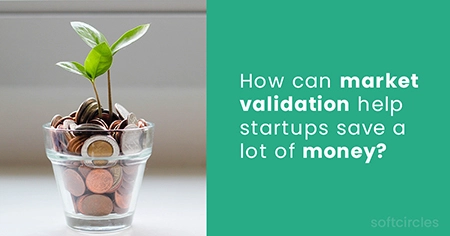Employees now access critical software applications from diverse environments, including coffee shops, home offices, and co-working spaces. Each setting poses unique security risks that traditional office-based defenses cannot mitigate. Public Wi-Fi networks and unsecured home connections significantly elevate the exposure of company information to threats.
Organizations must adopt a new paradigm for remote work security. The outdated model of data protection within office walls is no longer viable. Companies necessitate robust solutions that guarantee secure SaaS access irrespective of employee location.
Modern enterprises heavily depend on cloud-based applications for their daily operations. Without adequate protection, these tools become susceptible to cybercriminal exploitation. VPN technology has emerged as a critical defense mechanism, establishing secure tunnels between remote workers and company resources.
The Rise of Remote Work and SaaS Dependency
In America, a profound shift towards distributed work environments is underway. This transformation profoundly alters business operations and workforce management. The recent global events have accelerated a trend, compelling organizations to swiftly adapt their operational models.
Statistics reveal a compelling narrative. Over 42% of the U.S. workforce now engages in remote work at least part-time, a stark contrast to the 5% a decade prior. This surge has presented new challenges for business leaders, who must ensure data security across multiple locations while maintaining productivity.
Traditional security models are no longer adequate in this new environment. Employees access critical systems from various locations, including home offices, coffee shops, airports, and co-working spaces. Each location introduces security vulnerabilities that organizations must mitigate.
Shifting Business Models in the Digital Age
The digital transformation has revolutionized business operations. Companies that once relied on physical presence and paper-based processes now operate entirely digitally. This shift transcends simple technology adoption—it signifies a fundamental change in work processes.
Modern businesses have adopted flexible work arrangements as a competitive edge. They can recruit talent from anywhere in the country without geographical constraints. Yet, this flexibility increases the responsibility for protecting sensitive information across diverse network environments.
Organizations have found that distributed teams can be as productive as traditional office workers. The success hinges on implementing robust security measures that safeguard business data regardless of employee location.
Growing Reliance on Cloud-Based Applications
SaaS platforms have become the cornerstone of modern business operations. Companies rely on cloud-based applications for customer relationship management, project collaboration, financial planning, and communication. Platforms like Salesforce, Microsoft 365, Slack, and Zoom are indispensable for daily operations.
The reliance on SaaS platforms has surged exponentially. The average company now employs over 130 different cloud-based applications, a significant increase from fewer than 30 just five years ago. Each application poses a threat if not properly secured.
The challenge escalates when employees access these platforms from unsecured networks. Public Wi-Fi connections, home routers with default passwords, and mobile hotspots create significant security gaps that traditional firewalls cannot address.
Business leaders acknowledge the need for a new approach to securing cloud-based applications. The outdated model of perimeter security—protecting a physical office network—is no longer applicable when the office exists wherever employees connect to the internet.
Security Vulnerabilities in Remote SaaS Access
Remote work environments, characterized by multiple access points, introduce significant cybersecurity threats. Unlike traditional office settings, these environments lack stringent security controls. This disparity exposes sensitive business data to vulnerabilities that can jeopardize entire organizations.
Recognizing these vulnerabilities is imperative for safeguarding your business. Each remote access point serves as a conduit for hackers to exploit. Without robust security measures, companies are at risk of data breaches and operational disruptions.
Public Wi-Fi Risks and Data Exposure
Public Wi-Fi networks, ubiquitous in airports, hotels, and coffee shops, pose substantial risks. These networks frequently lack the encryption necessary to safeguard data transmission. As a result, hackers can intercept sensitive information exchanged between devices and SaaS applications.
Man-in-the-middle attacks are prevalent on public networks. Attackers insert themselves between users and legitimate access points, capturing login credentials, financial data, and confidential business information.
Data breaches through public Wi-Fi can occur within minutes of connection. Packet sniffing tools enable attackers to monitor all network traffic. This exposes customer data, proprietary information, and business communications to significant risks.
Home Network Security Gaps
Home networks present unique challenges often overlooked by businesses. Residential routers typically come with default passwords that users rarely change. These weak credentials offer hackers an easy entry point.
Outdated firmware exacerbates network vulnerabilities in home environments. Many users neglect to install security updates on their routers and connected devices. This leaves known security flaws unaddressed for extended periods.
The integration of Internet of Things (IoT) devices further complicates home network security. Smart TVs, thermostats, and security cameras often lack robust protection. Hackers can exploit these devices to gain access to the broader network and intercept SaaS communications.
Unsecured Connection Threats
Direct internet connections without adequate security pose immediate risks for SaaS access. Unencrypted data transmission allows criminals to monitor and capture sensitive information. Session hijacking becomes feasible when connections lack sufficient protection.
Credential theft is a significant concern for unsecured connections. Login information travels in plain text across unprotected networks. Cybercriminals can capture these credentials, gaining unauthorized access to business applications.
Geographic location tracking poses additional privacy risks through unsecured connections. Attackers can determine user locations and target specific individuals or organizations. This information enables more sophisticated social engineering attacks and data breaches.
The Cost of Inadequate SaaS Security
Companies that underestimate the importance of SaaS security face escalating costs that jeopardize their very existence. The financial repercussions of security breaches extend far beyond immediate response costs. Often, recovery expenses exceed the initial security investment by 300% or more.
Modern enterprises rely heavily on uninterrupted operations through cloud-based systems. Security failures disrupt these services, causing widespread impacts on company performance. Revenue halts, and teams must work to restore normalcy.
Data Breach Financial Impact
The average cost of a data breach hit $4.45 million in 2023, as reported by IBM's annual security report. This figure encompasses direct costs such as forensic investigations, legal fees, and system remediation. Data breach costs are escalating as attackers refine their tactics against SaaS applications.
Direct financial impacts include immediate response activities and technical recovery efforts. Companies must employ cybersecurity experts, conduct thorough system audits, and implement new security measures. These emergency expenses often strain budgets already allocated for other business priorities.
Indirect costs are even more devastating to long-term business health. Customer trust erodes rapidly following security incidents, leading to significant churn rates. Studies show that 65% of customers consider switching providers after learning about data breaches.
Lost business opportunities compound the financial damage over time. Prospective clients hesitate to engage with companies that have experienced recent security failures. This reputation damage affects business continuity for years following the initial incident.
Compliance and Regulatory Consequences
Regulatory penalties add substantial costs to security breach consequences. GDPR violations can result in fines up to 4% of annual global revenue or €20 million, whichever is higher. Regulatory compliance failures often trigger multiple penalty structures simultaneously.
Healthcare organizations face HIPAA violations ranging from $100 to $50,000 per affected record. Financial services companies encounter SOX compliance penalties that can reach millions of dollars. These regulatory frameworks target inadequate data protection measures.
California's CCPA imposes fines between $2,500 and $7,500 per violation for intentional breaches. Companies operating across multiple states must navigate varying regulatory requirements. Compliance costs multiply when organizations fail to implement proper security protocols from the start.
Legal proceedings following security incidents create additional financial burdens. Class-action lawsuits frequently emerge after major data breaches affecting consumer information. These legal challenges can persist for years, generating ongoing expenses that impact business continuity planning.
The combined impact of direct costs, indirect losses, and regulatory penalties highlights the economic rationale for proactive security investment. Prevention costs typically represent less than 10% of post-breach recovery expenses.
How VPN Technology Addresses Remote Work Security Challenges
Advanced VPN encryption transforms vulnerable internet connections into protected channels for safe SaaS access. Employees working from various locations face constant security threats that could compromise sensitive business data. Free VPN creates multiple layers of protection, shielding companies from these digital dangers.
Remote workers accessing cloud-based applications require robust security measures. VPN solutions provide this protection by establishing encrypted connections between user devices and company servers. This technology ensures that hackers cannot intercept or steal valuable information during transmission.
Encryption and Data Protection Mechanisms
VPN encryption employs advanced algorithms like AES-256 to scramble data into unreadable code. This military-grade encryption standard makes it virtually impossible for cybercriminals to decode intercepted information. Even if hackers capture data packets, they cannot access the actual content without the proper decryption keys.
Data protection protocols continuously monitor every piece of information flowing between remote devices and SaaS applications. They automatically encrypt emails, file uploads, video calls, and database queries before they leave the user's device.
Modern VPN services also include additional security features. These include kill switches that disconnect internet access if the VPN connection fails. This prevents accidental data exposure during connection drops.
Secure Tunneling for SaaS Applications
Secure tunneling creates private pathways through public networks. It is akin to building a protected highway through dangerous territory. Remote workers can safely travel this digital highway while accessing their favorite SaaS tools.
The tunneling process encapsulates all internet traffic within encrypted packets. These packets travel through potentially hostile networks without revealing their contents. Popular SaaS applications like Salesforce, Microsoft 365, and Slack benefit from this protection.
VPN tunnels maintain consistent security regardless of network conditions. Whether employees connect through hotel Wi-Fi or cellular hotspots, the secure tunneling technology provides the same level of protection.
IP Masking and Location Privacy
IP masking hides the real location and identity of remote workers. This feature prevents location-based attacks and reduces the risk of targeted cyber threats. Hackers cannot easily identify company employees or their physical locations.
Location privacy offers additional business advantages. It allows companies to access geo-restricted SaaS applications and maintain consistent user experiences across different regions. Employees can work from anywhere while appearing to connect from approved corporate locations.
VPN technology also prevents ISP tracking and data collection. Internet service providers cannot monitor which SaaS applications employees use or how much time they spend on specific platforms. This protects both individual privacy and corporate intelligence.
Key Benefits of VPN for Secure SaaS Access
The deployment of VPN infrastructure significantly enhances the security posture of remote teams. It establishes a robust framework for safeguarding sensitive data across cloud-based applications. These cybersecurity advantages transcend basic encryption, encompassing a holistic protection strategy tailored to address contemporary workplace challenges.
Implementing VPN technology immediately bolsters data security as employees access critical applications via encrypted connections. The strategic value of VPN technology is underscored by enhanced operational efficiency and a reduction in security incidents.
Enhanced Remote Work Data Protection
VPN technology erects multiple layers of protection to safeguard sensitive information during transmission between remote workers and SaaS platforms. Each data packet traverses encrypted tunnels, thwarting unauthorized access and interception. This protection is unwavering, irrespective of the underlying network infrastructure.
Organizations reap the benefits of standardized security protocols uniformly applied to all remote connections. Employees accessing applications from coffee shops, airports, or home offices receive identical levels of protection. This uniformity eradicates security gaps that typically arise from reliance on untrusted networks.
Advanced encryption algorithms ensure the confidentiality of business data during file uploads, downloads, and real-time collaboration sessions. Companies can grant remote access to sensitive applications with confidence, preserving data integrity.
Consistent Security Across Multiple Locations
VPN solutions eradicate security variability when employees work from diverse geographic locations. Traditional network security heavily relies on local infrastructure quality and configuration. VPN technology standardizes protection, irrespective of physical location or local network conditions.
Remote teams enjoy uniform access controls whether connecting from corporate offices, home networks, or temporary workspaces. This geographic flexibility supports modern business operations while maintaining stringent security standards. Organizations can expand their workforce globally without compromising data protection quality.
Centralized security management empowers IT administrators to implement consistent policies across all connection points. Updates and security patches are applied simultaneously to all users, ensuring all-encompassing protection for secure SaaS access.
Reduced Cyberattack Surface Area
VPN implementation significantly reduces the number of entry points that cybercriminals can exploit to access corporate systems. Instead of multiple unsecured connections, organizations create controlled access channels that funnel all traffic through monitored security checkpoints. This consolidation hampers attackers' ability to identify vulnerabilities.
Centralized traffic routing enhances monitoring and threat detection capabilities, rendering distributed access points obsolete. Security teams can analyze all connection attempts through unified dashboards, responding swiftly to suspicious activities.
The VPN benefits extend to simplified security auditing and compliance reporting. Organizations maintain detailed logs of all access attempts, creating extensive audit trails that satisfy regulatory requirements and support incident response procedures.
Implementing VPN Solutions for Small Teams and Startups
Small businesses and startups can implement effective VPN solutions without breaking their limited budgets. The key lies in understanding available options and making informed decisions that balance cost with security requirements. Many organizations assume that robust VPN implementation requires significant financial investment, but practical alternatives exist for resource-conscious teams.
Budget constraints shouldn't compromise your team's security posture. Smart planning and strategic selection of VPN services can deliver enterprise-level protection while maintaining operational efficiency.
Free VPN Options for Windows Users
Several reputable providers offer free VPN Windows solutions that can serve small teams effectively. ProtonVPN provides unlimited bandwidth on their free tier, making it suitable for teams with moderate usage needs. Windscribe offers 10GB monthly data allowance, which works well for occasional remote access to SaaS applications.
Free services come with limitations. Most restrict server locations and connection speeds. Some impose simultaneous connection limits that may not accommodate growing teams. Startup security solutions using free VPNs should evaluate these constraints against their operational requirements.
Consider upgrading to paid plans as your team grows. Free tiers serve as excellent starting points, but business continuity often requires the reliability and support that premium services provide.
Choosing the Right VPN for Business Needs
Selecting appropriate VPN services requires careful assessment of your specific requirements. Consider the number of simultaneous users, required bandwidth, and geographic distribution of your team. Teams accessing bandwidth-intensive SaaS applications need providers with robust infrastructure and minimal speed reduction.
Evaluate security protocols and encryption standards. Look for services supporting WireGuard or OpenVPN protocols, which offer optimal performance and security balance. Check logging policies to ensure your business data remains private.
Business-focused features like centralized management, user access controls, and integration capabilities become critical as teams scale. Some providers offer dedicated business plans with enhanced support and administrative tools.
Setup and Configuration Best Practices
Proper VPN implementation starts with standardized configuration across all devices. Create detailed setup guides for team members, including step-by-step instructions for Windows installation and configuration. Establish clear policies for when and how VPN connections should be used.
Choose optimal server locations based on your SaaS application requirements. Servers closer to application data centers typically provide better performance. Configure automatic connection features to ensure consistent protection without requiring manual intervention.
Regular testing and monitoring ensure continued effectiveness. Schedule periodic checks to verify connection stability and performance. Document any issues and maintain backup server configurations to minimize downtime during connectivity problems.
Train team members on proper VPN usage and troubleshooting basics. Clear communication about security policies and expectations helps maintain consistent protection across your organization.
Building a Comprehensive Remote Security Strategy
Establishing robust protection for distributed teams necessitates the development of a security strategy that integrates technological solutions with human-centered approaches. VPNs form the foundation, yet complete protection demands multiple defensive layers functioning in concert. Organizations must address both technical vulnerabilities and human factors to construct truly effective cybersecurity frameworks.
A successful remote work security strategy integrates various tools and practices. This methodology creates overlapping protection, safeguarding against diverse cyber threats.
Multi-layered Security Approach
Effective cybersecurity combines VPN technology with additional protective measures to create a holistic defense system. Multi-factor authentication introduces critical verification steps beyond traditional passwords. This additional layer prevents unauthorized access, even when login credentials are compromised.
Endpoint protection software monitors devices for suspicious activity and malware threats. Regular security audits help identify vulnerabilities before they can be exploited. Network monitoring tools track unusual data patterns that might indicate security breaches.
Cloud-based security solutions provide centralized management for distributed teams. These platforms enable IT administrators to maintain consistent protection policies across all remote locations. Automated threat detection systems respond swiftly to emerging security risks.
Employee Training and Awareness
Employee cybersecurity training transforms team members into active participants in organizational security. Regular education sessions teach workers to recognize phishing attempts and social engineering tactics. Proper VPN usage training ensures employees understand how to maintain secure connections.
Security awareness programs should cover password management, safe browsing habits, and incident reporting procedures. Interactive training modules engage employees more effectively than traditional presentations. Regular updates keep teams informed about new threats and evolving attack methods.
Creating a security-conscious culture encourages proactive protection behaviors. When employees understand their role in maintaining cybersecurity, they become valuable assets in defending against threats. This human element complements technological solutions, creating stronger overall protection.
Conclusion
The digital transformation has elevated secure remote work from a luxury to a business imperative. Organizations that adopt VPNs today are setting themselves up for long-term success in a world increasingly interconnected. As cyber threats evolve and remote work becomes permanent, the investment in robust security infrastructure yields dividends. These include protected data, maintained compliance, and uninterrupted operations.
The future of SaaS security hinges on proactive measures to address vulnerabilities before they escalate into costly breaches. VPN technology serves as the cornerstone for secure SaaS access, enabling teams to work productively from any location. Companies that implement robust remote work data protection strategies gain a competitive edge through enhanced security posture and operational flexibility.
Your organization's security strategy must evolve with changing work patterns and emerging threats. It is essential to evaluate your current security infrastructure and identify gaps that VPN solutions can fill. Consider factors such as team size, budget constraints, and specific compliance requirements when selecting appropriate tools. The cost of implementing proper security measures is significantly lower than the cost of recovering from security incidents or regulatory violations.








